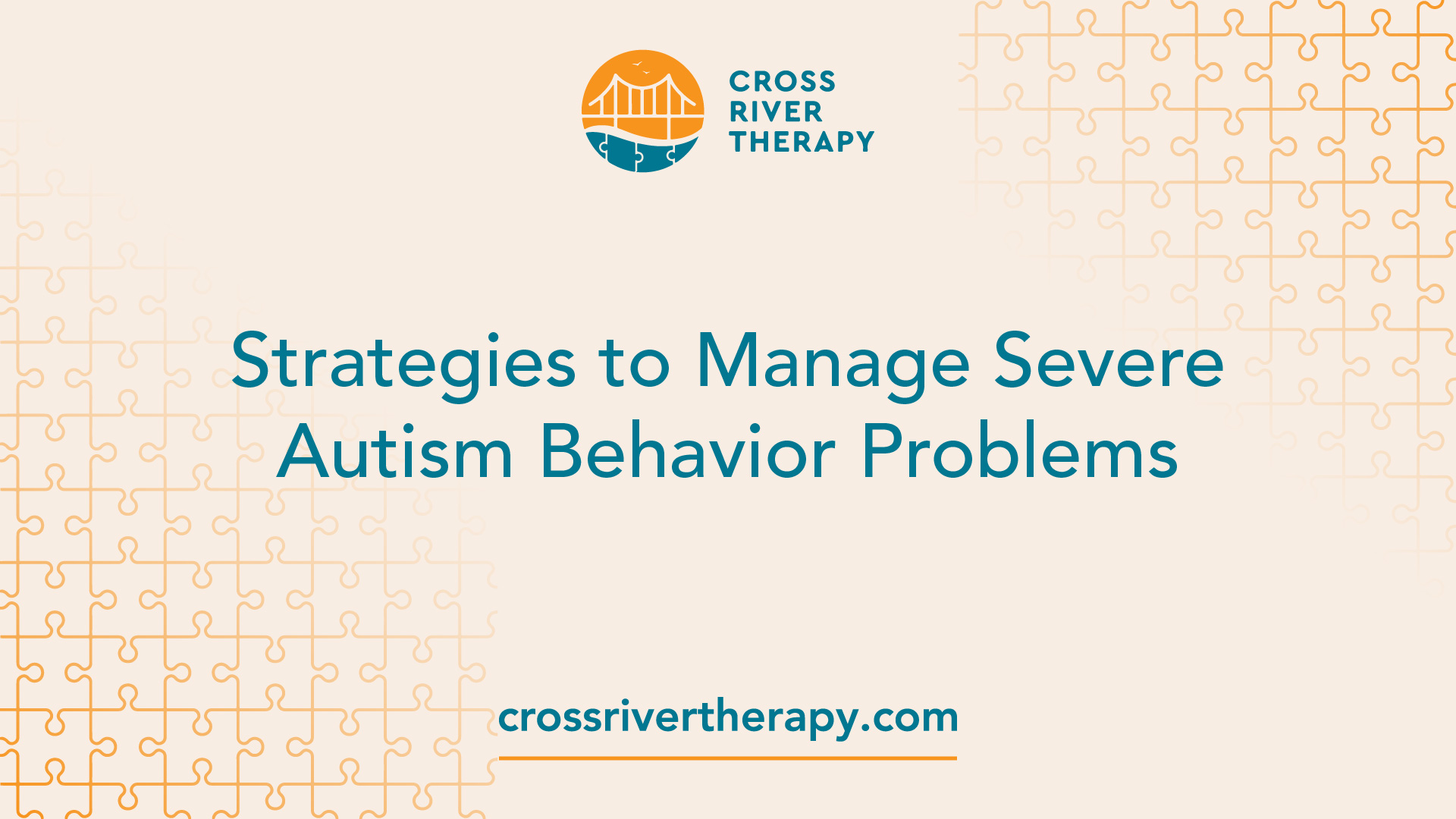How to design sensory-friendly spaces with advice from an Autism Therapist
How to design sensory-friendly spaces with advice from an Autism Therapist
Blog Article
Recognizing the Influence of Behavioral Autism on Every Day Life and Social Communications
You could not recognize just how deeply behavior autism influences daily life and social interactions. Individuals on the range typically navigate a world full of communication difficulties and sensory overload. These difficulties can lead to disappointment and seclusion, affecting their relationships and overall well-being. Understanding these subtleties is vital for promoting encouraging atmospheres. What strategies can we apply to create even more meaningful links and comprehensive rooms? The answers might stun you.
Defining Behavior Autism and Its Features
Behavior autism, typically referred to as autism range condition (ASD), incorporates a variety of conditions defined by obstacles in social interaction, communication, and repetitive habits. You could see that people with ASD usually have a hard time to interpret social hints, which can lead to misconceptions in conversations. They might find it difficult to establish eye get in touch with or take part in small talk, making social circumstances feel frustrating.
Communication difficulties can show up in various ways, from delayed speech development to a preference for using less words. Repeated actions, such as hand-flapping or shaking, can act as coping mechanisms to manage stress and anxiety or sensory overload. These attributes can profoundly influence life, making it necessary for you to recognize and support those with ASD. By acknowledging these characteristics, you can promote an environment that promotes approval and urges effective interaction, assisting individuals with autism grow in their day-to-day interactions.
The Range of Autism: Recognizing Variability in Habits
Autism range condition (ASD) isn't a one-size-fits-all diagnosis; it differs widely among people. You may come across people who are very verbal and involve easily in discussions, while others could choose singular tasks or connect non-verbally.
In addition, the means people with ASD reply to sensory input can vary significantly; some could be overwhelmed by loud noises or bright lights, whereas others thrive in promoting settings. The range likewise includes distinctions in social communications; some individuals may struggle to translate social cues, while others browse social setups with family member ease. Understanding this irregularity is necessary, as it aids you appreciate each individual's special experience and tailor support to their specific requirements, promoting a more inclusive environment for everyone.
Interaction Challenges Dealt With by People With Autism
When you engage with individuals on the autism spectrum, you may see their special communication obstacles. They often deal with problems with both spoken and nonverbal signs, which can impact their social interactions. Understanding these barriers is vital for fostering much better connections and assistance.

Verbal Interaction Difficulties
Lots of individuals on the autism spectrum experience verbal interaction troubles that can significantly influence their everyday communications. Your tone, speed, or quantity could not align with social assumptions, creating others to misunderstand your intentions. Recognizing these challenges can assist you and your assistance network establish strategies to boost communication and foster far better links with others in your everyday life.
Nonverbal Interaction Barriers
Verbal interaction isn't the only difficulty people on the autism range face; nonverbal interaction obstacles can be equally as substantial. You may discover it difficult to interpret body language, face expressions, and eye get in touch with, which are essential for efficient interaction. These difficulties can bring about misconceptions or misconceptions of social signs, making interactions really feel confusing or frustrating. You might battle to express your own feelings through nonverbal methods, leaving others not sure of your intentions or feelings. This disconnect can produce sensations of isolation and aggravation. Identifying these barriers is critical for promoting understanding and compassion in your interactions. By resolving nonverbal communication, you can locate strategies to boost your social experiences and enhance your general quality of life.
Social Communication Influences
Social communications can commonly really feel frustrating due to the distinct communication obstacles dealt with by individuals with autism. Identifying these difficulties can help you locate methods to enhance interaction, such as practicing social skills in risk-free settings or making use of aesthetic aids. Understanding your demands allows you to browse social interactions with better confidence and convenience.
Social Interaction and Connection Structure in Autism
While building relationships can be testing for individuals with autism, recognizing their special point of views and communication styles can cultivate purposeful links. You This Site may see that lots of individuals on the spectrum like straight communication and might have a hard time with social cues or tiny talk. By being simple in your communications, you can aid develop an environment where they feel comfy.
Take the time to observe and listen how they share themselves. This insight can assist you in guiding discussions more successfully. Participating in shared passions can additionally serve as a bridge to deeper connections. Whether it's a pastime, a preferred show, or a shared passion, these common threads can open up doors to relationship.
Every Day Life Regimen: Navigating Approaches and obstacles
Maneuvering daily life routines can be especially testing for people with autism, especially when unexpected changes happen. You may discover comfort in having a structured routine, as it assists you anticipate what's next. When disruptions happen, it's normal to really feel overwhelmed or distressed. To browse these challenges, consider implementing aesthetic schedules read or checklists. These tools can supply quality and peace of mind.
Establishing a routine that consists of sensory breaks can likewise be useful. You can prepare time-outs throughout your day to recharge. It's necessary to connect with those around you, allowing them know your requirements and choices. This helps create an understanding atmosphere.
Finally, technique mindfulness strategies to take care of stress and anxiety and anxiety. Simple breathing workouts or basing strategies can make a substantial distinction. By incorporating these methods, you can improve your day-to-day regimen and decrease disruptions, making life really feel more manageable.
Toughness and Abilities of People on the Autism Range
Understanding day-to-day life regimens is simply one aspect of the autism experience. Many people on the autism range possess exceptional staminas and capabilities that establish them apart.
In addition, your memory abilities often beam, specifically in areas of interest. Aba Therapist. This flair for keeping information can make you a valuable resource in areas like scientific research, modern technology, or art. You might additionally display strong visual thinking, allowing you to visualize intricate principles and address troubles creatively
Additionally, your distinct perspective on the globe can promote empathy and understanding in others, enhancing social interactions. Welcoming these staminas not just enhances your confidence but additionally aids others appreciate the varied abilities you give the table.
Creating Comprehensive Settings for Individuals With Autism
Developing inclusive environments for people with autism begins with designing sensory-friendly spaces that satisfy their distinct needs. You can additionally promote chances for social interaction, assisting to develop connections and friendships. By making these changes, you'll add to a more inviting ambience for everybody.
Designing Sensory-Friendly Spaces
While developing sensory-friendly rooms, it's crucial to show on the unique requirements of individuals with autism. Begin by picking soothing this link shades and soft lighting to produce a calming environment. Integrate silent zones where people can recharge and pull back when overwhelmed. You'll intend to reduce loud sounds and distractions, making use of soundproof materials or white sound equipments to assist keep harmony. Consider responsive aspects like soft fabrics or fidget-friendly things that can offer convenience. Ascertain that spaces are adaptable, permitting for very easy rearrangement to accommodate various activities. Include aesthetic routines or clear signage to assist individuals navigate the area with confidence. By attentively incorporating these components, you can develop a welcoming atmosphere that sustains sensory needs and advertises total wellness.
Advertising Social Communication Opportunities
Creating sensory-friendly areas not only addresses individual convenience however also establishes the phase for purposeful social communications among people with autism. To advertise these communications, produce inclusive settings that welcome involvement. Organize organized tasks, like art classes or group video games, that motivate partnership without overwhelming sensory input. Usage visual help and clear interaction to assist everyone involve easily. Encourage peer mentoring, coupling people with autism with encouraging peers who can guide them via social circumstances. Additionally, consider organizing regular area events that celebrate neurodiversity, fostering approval and understanding among all individuals. By applying these methods, you can boost social possibilities, helping people with autism build relationships and strengthen their social abilities in a risk-free, welcoming setting.

Frequently Asked Concerns
Just How Can Pals Support Someone With Behavioral Autism?
You can support a good friend with behavior autism by holding your horses, paying attention actively, and appreciating their borders. Take part in tasks they take pleasure in, communicate openly, and develop a comfy atmosphere where they really feel valued and comprehended.
What Resources Are Offered for Parents of Kid With Autism?
You can discover numerous resources for moms and dads of youngsters with autism, consisting of support system, educational websites, and neighborhood neighborhood services. Getting in touch with various other parents can additionally supply useful understandings and shared experiences to aid browse obstacles.
Can Behavioral Autism Modification Over Time?

Yes, behavioral autism can change gradually. You may discover changes in communication, social abilities, and behavior as your youngster grows. Early treatment and assistance typically play vital functions in these developmental adjustments.
Exactly How Do Sensory Sensitivities Affect Every Day Life?
Sensory sensitivities can make day-to-day experiences frustrating. You could battle with intense lights or loud noises, bring about anxiety or evasion. Discovering settings that accommodate your requirements can significantly boost your convenience and general life.
What Prevail Misconceptions About Behavioral Autism?
You may assume behavior autism only impacts communication abilities, but it's even more facility. Lots of think individuals lack compassion or intelligence, which isn't true. Recognizing these false impressions helps foster acceptance and support for those on the range.
Behavior autism, often referred to as autism range problem (ASD), encompasses a variety of problems defined by challenges in social interaction, communication, and recurring actions.Social interactions can usually really feel overwhelming due to the special communication difficulties faced by people with autism.Designing sensory-friendly rooms not only addresses individual comfort but also establishes the phase for purposeful social communications amongst individuals with autism. Urge peer mentoring, coupling people with autism with supportive peers that can assist them with social circumstances. By implementing these techniques, you can enhance social chances, assisting individuals with autism build relationships and reinforce their social abilities in a secure, inviting setting.
Report this page